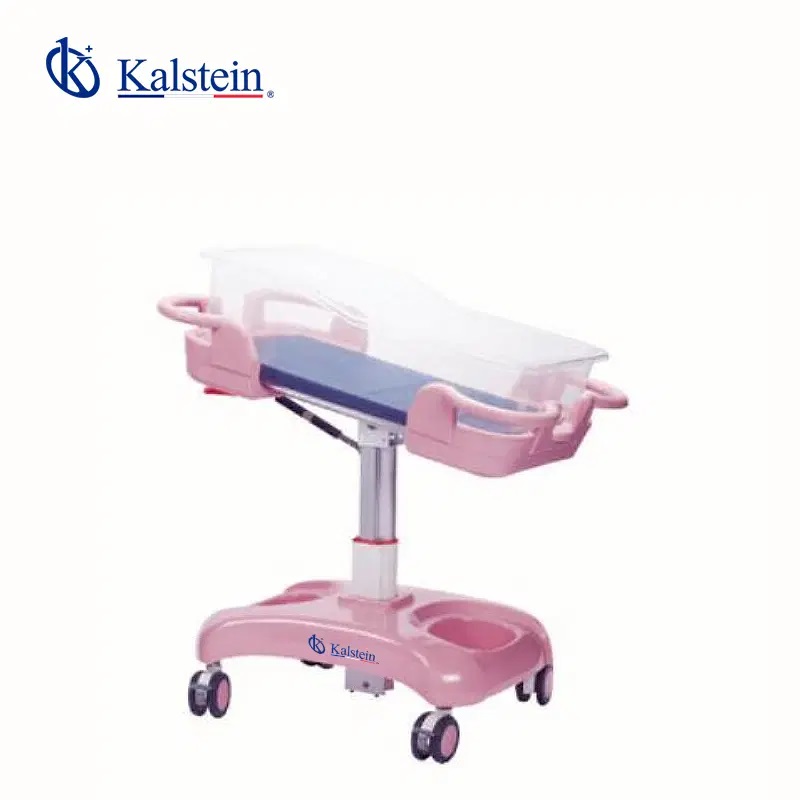Baby cribs are essential in any medical environment, providing safety and comfort for both infants and healthcare professionals. Over the past decade, there has been significant progress in the design and functionality of ABS baby cribs, integrating the latest trends in medical innovations and developments.
This article will explore how ABS baby cribs align with these trends, ensuring that hospitals and clinics offer the best in neonatal care.
Are you yearning for top-tier medical equipment, ready to enhance the efficiency of your laboratory? Visit https://kalstein.de/category-product/medical-line/hospital-bed/ to explore our high-end catalog, packed with the best finds at the most competitive prices. Excellence marks our brand, we innovate and manufacture high-precision equipment, both reliable and durable to meet your needs. Why wait? Make your quick and secure online purchase, take the leap towards the future of medical technology today. https://kalstein.de/
Innovations in Materials: The Choice of ABS
The material used in the manufacture of baby cribs is crucial for the product’s safety and durability. ABS (Acrylonitrile Butadiene Styrene) has emerged as one of the preferred materials due to its exceptional properties. This engineering plastic is known for its impact resistance, ease of cleaning, and durability, making it an ideal choice for the hospital environment.
ABS baby cribs are not only robust but also lightweight, facilitating transport and handling. Additionally, their non-porous surface prevents the accumulation of bacteria and other pathogens, aligning with best medical practices for infection prevention. This innovation in material ensures that cribs are not only safe but also hygienic, protecting the most vulnerable patients.
Developments in Safety: Ergonomic and Functional Designs
The safety of infants in the hospital environment is of utmost priority. The latest developments in the design of ABS baby cribs have placed significant emphasis on ergonomics and functionality. These cribs are designed to provide easy and safe access to infants, allowing healthcare professionals to perform procedures and care more effectively.
Key features include adjustable and transparent sides that allow constant monitoring without moving the baby. Additionally, many ABS cribs incorporate brakes on the wheels to ensure that the crib remains stationary during procedures. These improvements not only enhance safety but also increase efficiency in neonatal care.
Technological Innovations: Integration of Medical Devices
The integration of advanced technology into baby cribs has revolutionized neonatal care. The latest trends include incorporating medical devices directly into ABS cribs, enabling continuous and real-time monitoring of the baby’s vital signs. This integration facilitates early detection of any anomalies, significantly improving survival and recovery rates.
These technologically advanced cribs can be equipped with temperature sensors, heart rate monitors, and alarm systems that alert medical staff to any critical changes in the baby’s condition. The adoption of these technologies demonstrates a commitment to innovation in medical equipment and the development of state-of-the-art medical devices.
Focus on Mobility: Portable and Adjustable Cribs
Mobility is an essential aspect of the design of baby cribs for hospitals and clinics. Recent trends show a preference for cribs that are easily transportable and adjustable to different heights. These features are particularly important in emergency situations where the baby needs to be quickly moved to different areas of the hospital.
ABS baby cribs have been designed with swivel wheels and robust brakes that allow smooth and secure mobility. Additionally, the ability to adjust the crib’s height ensures that healthcare professionals can work in an ergonomic position, reducing fatigue and improving care efficiency. This trend towards mobility and flexibility directly responds to the dynamic needs of the modern hospital environment.
Sustainability and Eco-Friendliness: Recyclable Materials
In an increasingly sustainability-conscious world, the choice of recyclable materials for medical equipment has become a prominent trend. ABS baby cribs are not only durable and safe but also environmentally friendly. ABS is a recyclable material, and its use in crib manufacturing contributes to waste reduction and promotes sustainable practices in the healthcare sector.
Moreover, many companies are adopting production processes that minimize environmental impact, using more efficient manufacturing techniques and less polluting materials. This focus on sustainability reflects a commitment to innovation in medical equipment that benefits both patients and the planet.
Customization and Design: Aesthetics and Functionality
Customization and aesthetic design are becoming key aspects in the manufacturing of ABS baby cribs. Hospitals and clinics seek equipment that is not only functional but also aesthetically pleasing. ABS baby cribs now come in a variety of colors and designs that can be customized to fit the hospital’s visual identity.
In addition to aesthetics, functionality remains a priority. Customized cribs can include additional features such as storage compartments, adjustable lighting systems, and padded surfaces for added baby comfort. This combination of aesthetics and functionality ensures that baby cribs are not only practical but also visually appealing, enhancing the overall experience for medical staff, patients, and their families.
Conclusion
The latest trends in ABS baby cribs from the medical line reflect a commitment to innovation and the development of medical devices that improve safety, functionality, and sustainability. From the use of advanced materials like ABS to the integration of monitoring technologies, these cribs are designed to meet the dynamic needs of the modern hospital environment. Adopting these trends not only enhances the quality of neonatal care but also ensures that hospitals and clinics stay at the forefront of medical equipment innovations.
ABS baby cribs represent the latest in medical developments, offering safe, efficient, and sustainable solutions for newborn care. By keeping up with these trends, healthcare professionals can ensure they provide the best possible care, aligning with best medical practices and the latest innovations in the field.

